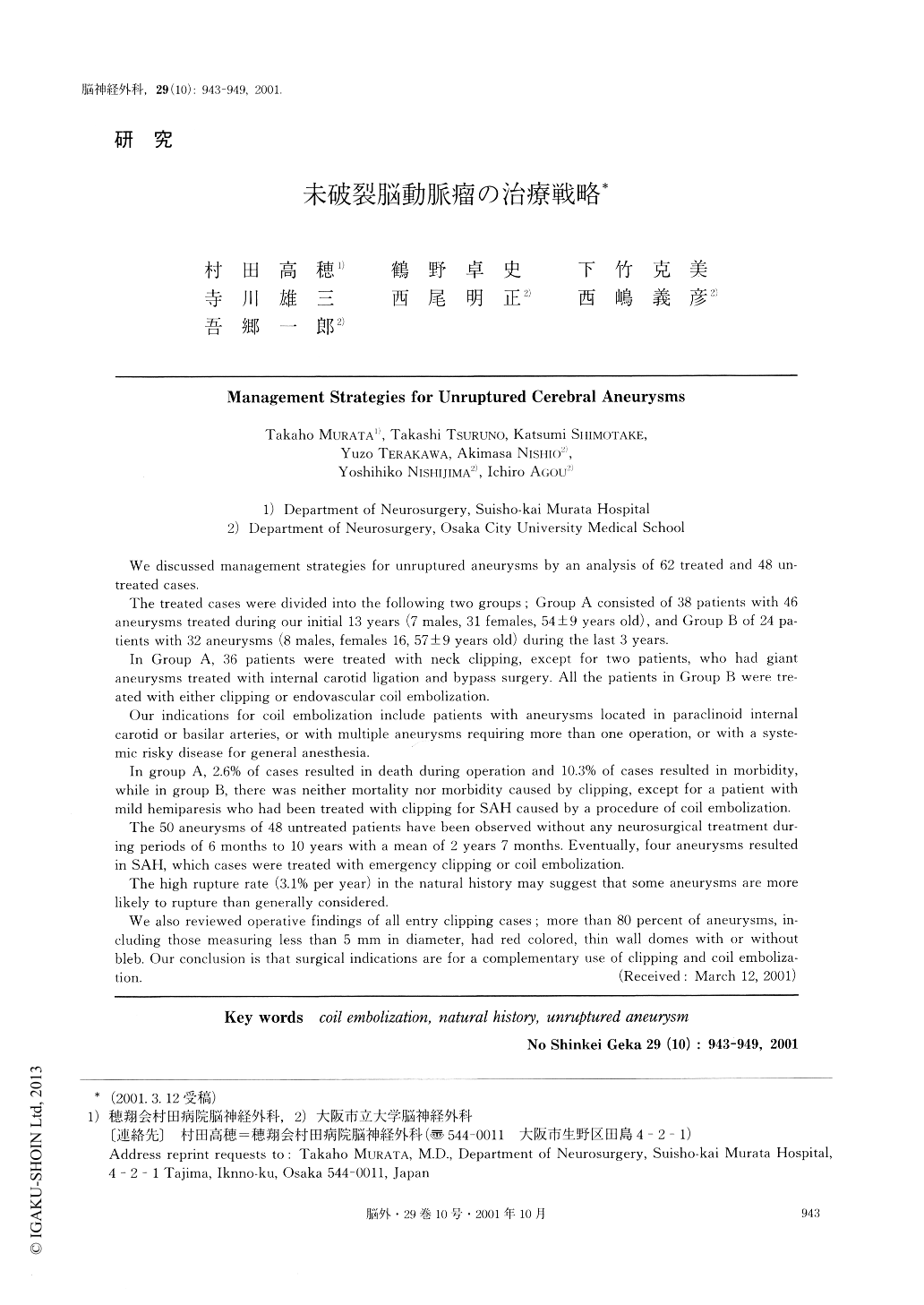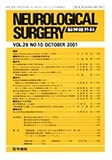Japanese
English
- 有料閲覧
- Abstract 文献概要
- 1ページ目 Look Inside
I.はじめに
未破裂脳動脈瘤(以下未破裂瘤)の治療法については,血管内手術による瘤内GDCコイル塞栓術(以下coiling)が導入され,その治療戦略の幅が広がった7,8).しかし,この度のinternational studyで,破裂の危険性はこれまでいわれていたものよりもずっと低いことが報告され,とくに無症候性の未破裂瘤については,その外科治療の適応が再問題化されている3,34).
ここでは,過去16年間に経験した未破裂瘤110例のうち,処置例62例,未処置(経過観察)例48例につき分析し,とくにその外科治療戦略について検討した.
We discussed management strategies for unruptured aneurysms by an analysis of 62 treated and 48 un-treated cases.
The treated cases were divided into the following two groups ; Group A consisted of 38 patients with 46aneurysms treated during our initial 13 years (7 males, 31 females, 54±9 years old), and Group B of 24 pa-tients with 32 aneurysms (8 males, females 16, 57±9 years old) during the last 3 years.
In Group A, 36 patients were treated with neck clipping, except for two patients, who had giantaneurysms treated with internal carotid ligation and bypass surgery. All the patients in Group B were tre-ated with either clipping or endovascular coil embolization.
Our indications for coil embolization include patients with aneurysms located in paraclinoid internalcarotid or basilar arteries, or with multiple aneurysms requiring more than one operation, or with a syste-mic risky disease for general anesthesia.
In group A, 2.6% of cases resulted in death during operation and 10.3% of cases resulted in morbidity,while in group B, there was neither mortality nor morbidity caused by clipping, except for a patient withmild hemiparesis who had been treated with clipping for SAH caused by a procedure of coil embolization. The 50 aneurysms of 48 untreated patients have been observed without any neurosurgical treatment dur-ing periods of 6 months to 10 years with a mean of 2 years 7 months. Eventually, four aneurysms resultedin SAH, which cases were treated with emergency clipping or coil embolization.
The high rupture rate (3.1% per year) in the natural history may suggest that some aneurysms are morelikely to rupture than generally considered.
We also reviewed operative findings of all entry clipping cases ; more than 80 percent of aneurysms, in-cluding those measuring less than 5 mm in diameter, had red colored, thin wall domes with or withoutbleb. Our conclusion is that surgical indications are for a complementary use of clipping and coil emboliza-tion.

Copyright © 2001, Igaku-Shoin Ltd. All rights reserved.


